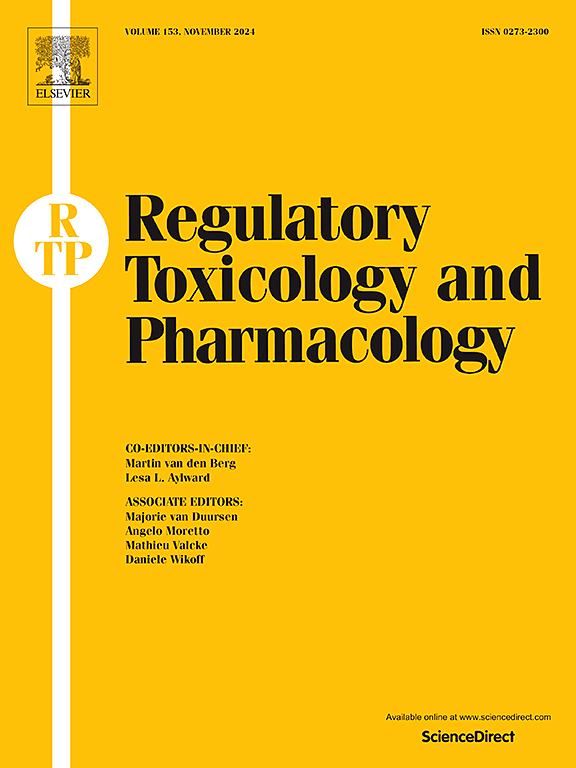生物杀灭剂致敏潜力的体外预测。
IF 3
4区 医学
Q1 MEDICINE, LEGAL
引用次数: 0
摘要
杀菌剂广泛用于工作场所,主要用于工业和医疗保健部门。由于它们对人类健康的潜在危害,它们的使用在欧洲市场受到管制。特别是,必须确定这些物质的致敏潜力,以避免接触或采取措施最大限度地保护接触的员工。本研究的目的是预测工作场所使用的24种杀菌剂的致敏潜力。为此,用流式细胞术分析了暴露于这些物质的小鼠骨髓源树突状细胞(bmdc)中两种共刺激标记物和四种趋化因子的表达。22种物质具有浓度效应诱导细胞活化,并被确定为致敏剂。根据BMDC模型,将这些物质分为4类:6种极端致敏剂、12种强致敏剂、2种中等致敏剂和2种弱致敏剂。除极端杀菌剂外,所有这些杀菌剂均可诱导BMDCs中趋化因子的分泌上调。总之,大多数被测试的杀菌剂被确定为潜在的致敏剂。这些数据强调需要在预防性的职业环境中小心处理这些物质。本文章由计算机程序翻译,如有差异,请以英文原文为准。

Ex vivo prediction of the sensitization potential of biocides
Biocides are widely used in the workplace, mainly in the industrial and healthcare sectors. Because of their potential hazard for human health, their use is regulated on the European market. In particular, the sensitization potential of these substances must be identified in order to implement avoidance of exposure or measures maximizing protection of exposed employees. The objective of this study was to predict the sensitization potential of 24 biocides used in the workplace. For this purpose, the expression of two co-stimulatory markers and four chemokines was analyzed by flow cytometry in murine bone marrow-derived dendritic cells (BMDCs) exposed to the substances. Twenty-two substances induced cell activation with a concentration effect and were identified as sensitizers. Based on the BMDC model, these substances were classified into four potency categories: six extreme sensitizers, twelve strong sensitizers, two moderate and two weak sensitizers. All these biocides, except the ones classified as extreme, induced an upregulation of chemokines secretion in BMDCs. To conclude, the majority of the biocides tested were identified as potential sensitizers. These data underline the need to handle such substances with care in a preventive occupational context.
求助全文
通过发布文献求助,成功后即可免费获取论文全文。
去求助
来源期刊
CiteScore
6.70
自引率
8.80%
发文量
147
审稿时长
58 days
期刊介绍:
Regulatory Toxicology and Pharmacology publishes peer reviewed articles that involve the generation, evaluation, and interpretation of experimental animal and human data that are of direct importance and relevance for regulatory authorities with respect to toxicological and pharmacological regulations in society. All peer-reviewed articles that are published should be devoted to improve the protection of human health and environment. Reviews and discussions are welcomed that address legal and/or regulatory decisions with respect to risk assessment and management of toxicological and pharmacological compounds on a scientific basis. It addresses an international readership of scientists, risk assessors and managers, and other professionals active in the field of human and environmental health.
Types of peer-reviewed articles published:
-Original research articles of relevance for regulatory aspects covering aspects including, but not limited to:
1.Factors influencing human sensitivity
2.Exposure science related to risk assessment
3.Alternative toxicological test methods
4.Frameworks for evaluation and integration of data in regulatory evaluations
5.Harmonization across regulatory agencies
6.Read-across methods and evaluations
-Contemporary Reviews on policy related Research issues
-Letters to the Editor
-Guest Editorials (by Invitation)

 求助内容:
求助内容: 应助结果提醒方式:
应助结果提醒方式:


